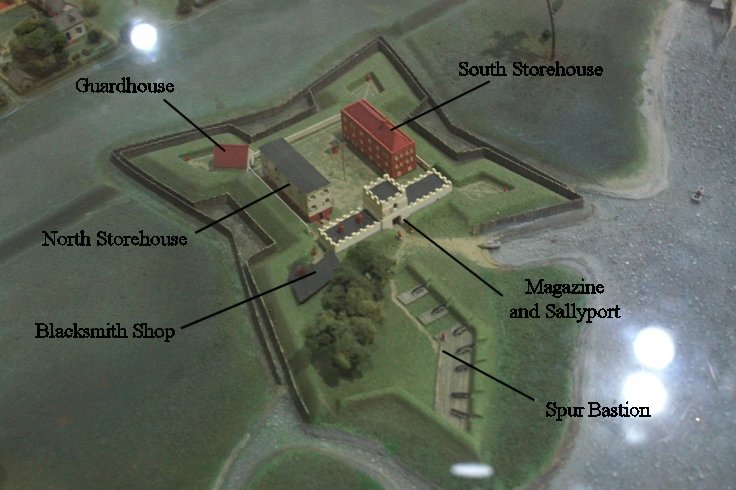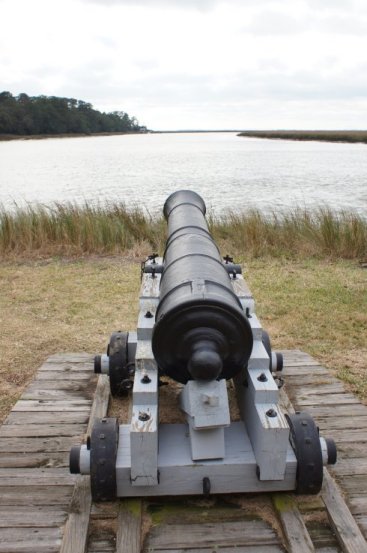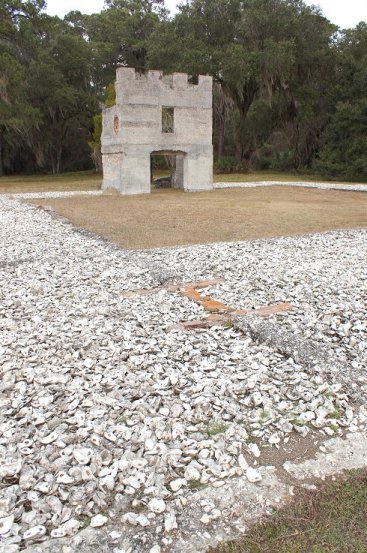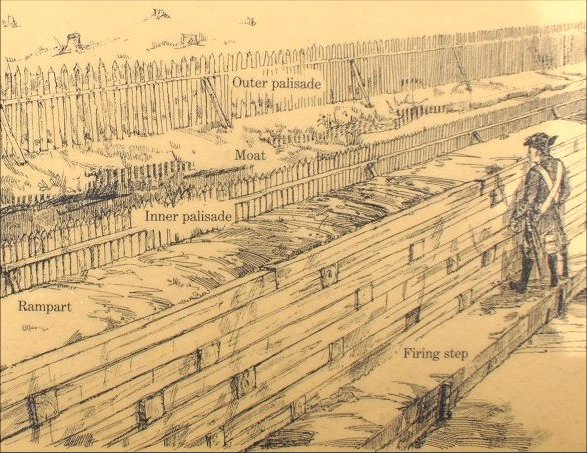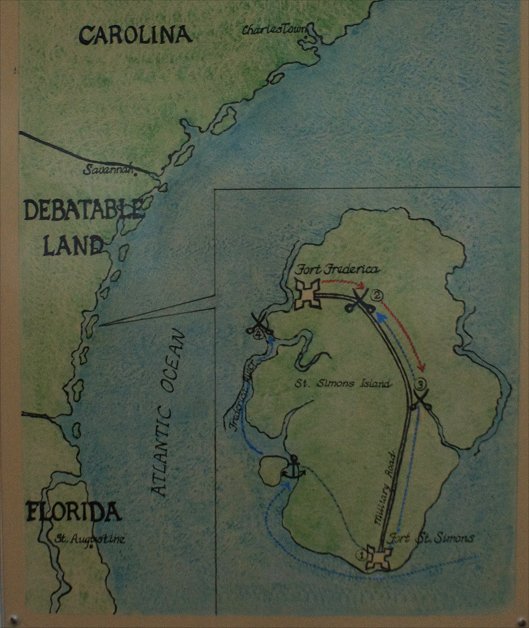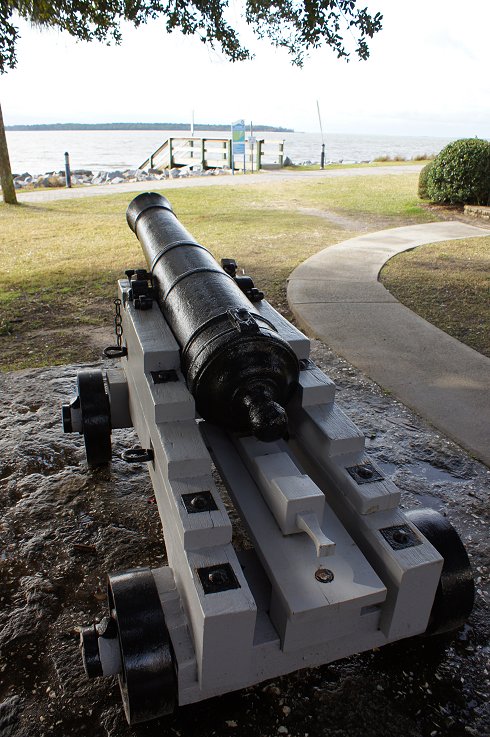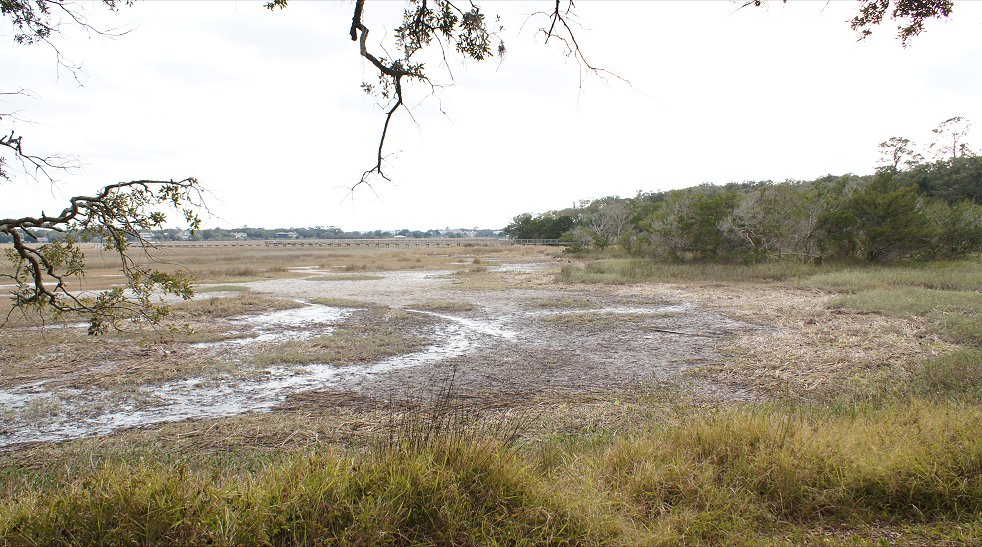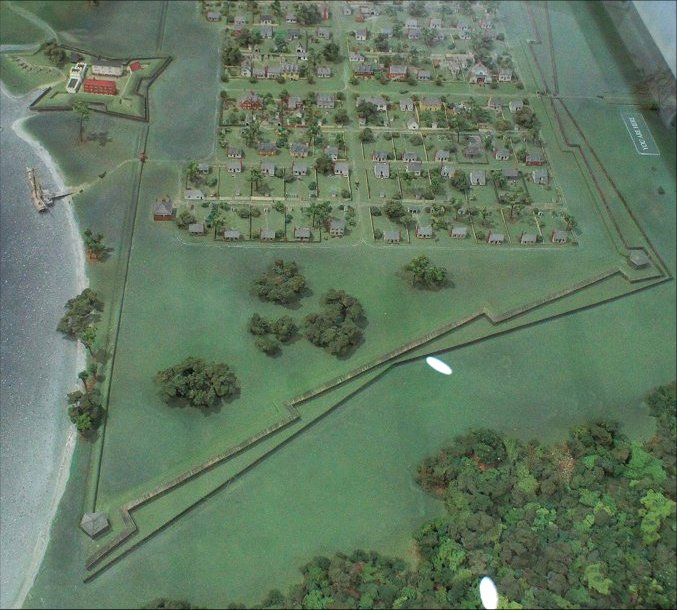
When relations with Spain became more strained in the late 1730s, city walls were built around the town. Now the original fort could perhaps function as a citadel - a fallback position in case the town was captured. The town walls were small by European standards, with a moat 10 feet wide, but the design was interesting in that the trace was an innovative one based on Vauban's Neuf Brisach. The bastions had blockhouses that although they were proof only against small arms perhaps served like cavaliers in a more heavily built work. The curtain walls between the bastions were indented to provide flanking fire along the length of the wall.

